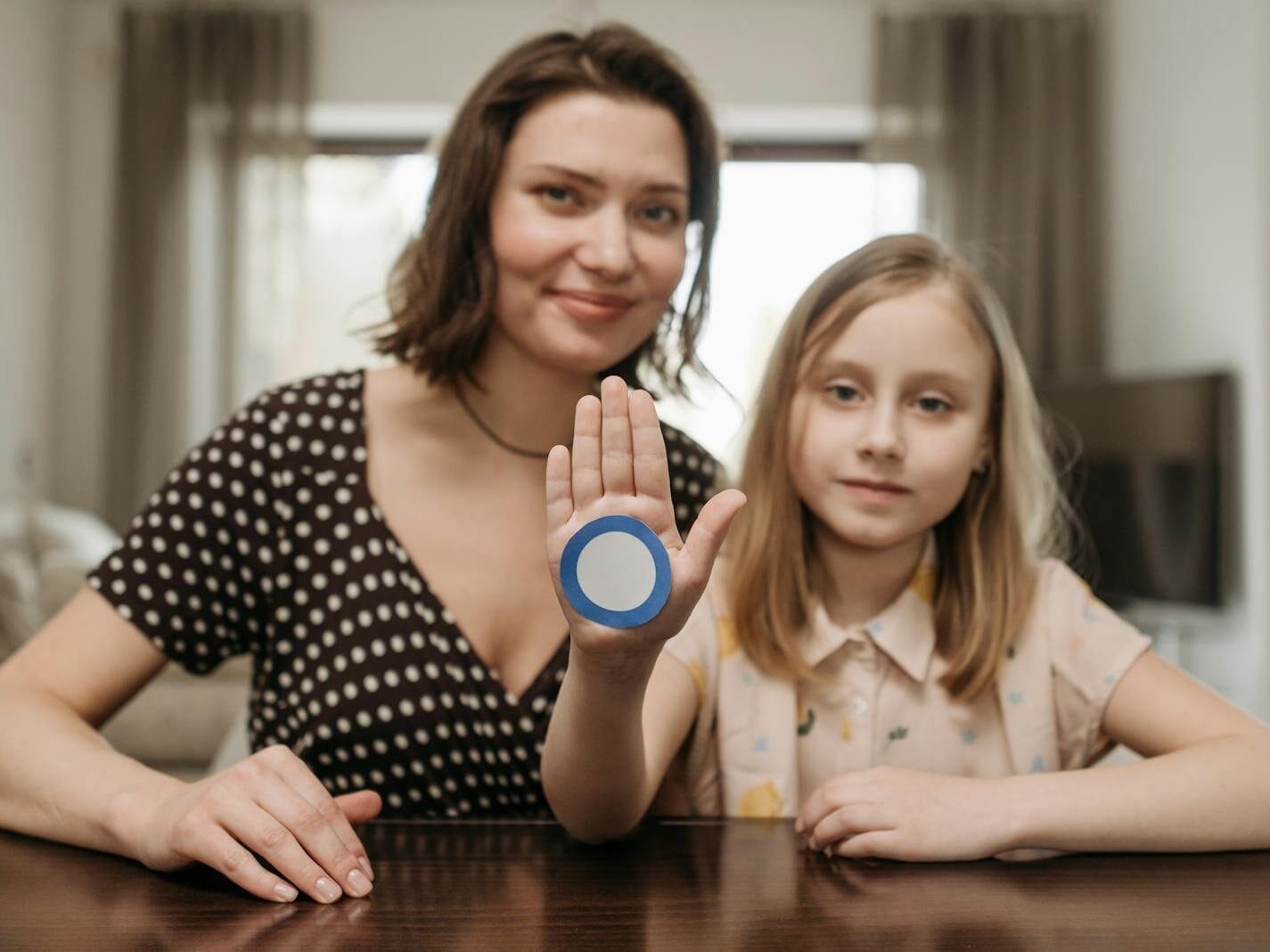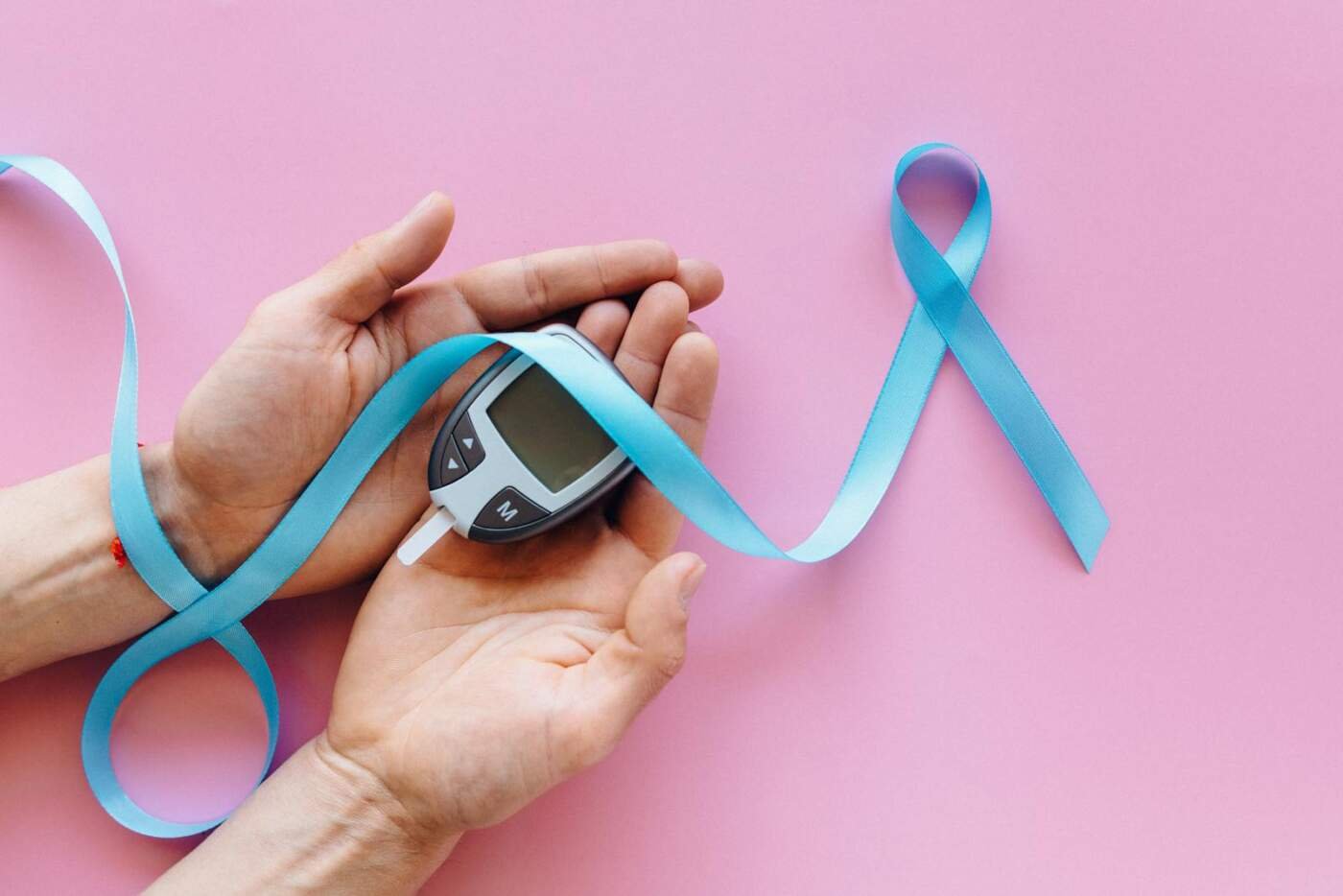Table of Contents
Type 2 diabetes symptoms are a growing concern worldwide, as this chronic condition affects millions of people, and its prevalence is increasing at an alarming rate. Often referred to as a “silent epidemic”, type 2 diabetes symptoms can develop gradually, making it difficult for individuals to recognize them in the early stages. In many cases, type 2 diabetes symptoms may go unnoticed or be dismissed as something else for years, resulting in a delayed diagnosis.
Understanding these early warning signs is crucial, as it allows for timely intervention and can prevent the long-term complications associated with this condition. In this article, we aim to explore the key type 2 diabetes symptoms, helping you to recognize them and take proactive steps to safeguard your health.
Type 2 diabetes typically develops when the body becomes resistant to insulin, a hormone produced by the pancreas that is essential for allowing glucose (sugar) from food to enter cells and be used as energy. In the early stages, the pancreas attempts to compensate by producing more insulin. However, over time, the body can no longer keep up with the increased demand. This resistance leads to a buildup of glucose in the bloodstream, causing hyperglycemia, which is the hallmark of diabetes.
While some individuals might experience type 2 diabetes symptoms that are prominent and easily identifiable, others may only show subtle or vague indicators, making early detection more difficult. These symptoms can range from increased thirst and frequent urination to blurred vision and fatigue.
Being aware of the wide range of potential type 2 diabetes symptoms is crucial, as early identification allows for more effective management of the disease and a reduction in the risk of serious complications. The first step in tackling diabetes is to recognize these signs and consult a healthcare provider for a proper diagnosis.
Type 2 Diabetes Symptoms: The Warning Signs

The symptoms of type 2 diabetes can vary from person to person, and their severity can differ based on blood sugar levels and the duration of the condition. Here are some of the most common and significant type 2 diabetes symptoms to be aware of:
- Increased Thirst (Polydipsia): High blood sugar levels cause the kidneys to work harder to filter and absorb excess glucose. This process draws fluid from tissues, leading to dehydration and consequently, increased thirst. You might find yourself feeling persistently thirsty, no matter how much water you drink.
- Frequent Urination (Polyuria): As the kidneys work overtime to eliminate excess sugar, they pull more water from the blood, resulting in increased urine production. You might notice yourself needing to urinate much more frequently, especially at night (nocturia).
- Increased Hunger (Polyphagia): Despite elevated blood sugar levels, the body’s cells are not effectively receiving glucose for energy due to insulin resistance. This can lead to a feeling of constant hunger, even shortly after eating. Your body is essentially signaling that it needs fuel, even though there is plenty of sugar circulating in your blood.
- Unexplained Weight Loss: While increased hunger might suggest weight gain, some individuals with type 2 diabetes experience unexplained weight loss. This happens because the body may start breaking down muscle and fat for energy when glucose cannot be used effectively. This is particularly noticeable in newly diagnosed cases where the blood sugar levels have been high for a while.
- Fatigue: Persistently high blood sugar levels can lead to fatigue and a general feeling of tiredness. When glucose isn’t entering cells efficiently, the body lacks the energy it needs to function optimally. This fatigue is often more than just feeling “tired”; it can be a persistent and draining exhaustion.
- Blurred Vision: High blood sugar can affect the lenses of your eyes, causing them to swell. This swelling can alter your vision, leading to blurriness. While blurry vision can have other causes, it’s a notable type 2 diabetes symptom, especially if it comes on relatively suddenly.
- Slow-Healing Sores or Cuts: Elevated blood sugar can impair blood circulation and nerve function, which are crucial for wound healing. As a result, even minor cuts or sores might take significantly longer to heal than usual. This delayed healing increases the risk of infections.
- Frequent Infections: High blood sugar can weaken the immune system, making individuals more susceptible to infections. Common infections in people with undiagnosed or poorly controlled diabetes include yeast infections, urinary tract infections (UTIs), and skin infections.
- Areas of Darkened Skin (Acanthosis Nigricans): This condition manifests as dark, velvety patches of skin, often appearing in body folds like the neck, armpits, and groin. Acanthosis nigricans is often a sign of insulin resistance and is a strong indicator of prediabetes or type 2 diabetes.
- Tingling, Pain, or Numbness in Hands/Feet (Neuropathy): Over time, high blood sugar can damage nerves, leading to diabetic neuropathy. This nerve damage can cause tingling, numbness, burning pain, or even loss of sensation, particularly in the hands and feet.
Why Do These Symptoms Occur?
Many type 2 diabetes symptoms are directly linked to the body’s response to persistently high blood sugar levels. Let’s break down the connection:
- Increased Thirst and Frequent Urination: The kidneys are trying to flush out excess glucose through urine, leading to dehydration and the need to drink more (thirst) and urinate more frequently.
- Increased Hunger: Cells are starved of glucose due to insulin resistance, signaling hunger to the brain even though blood sugar is high.
- Unexplained Weight Loss: The body may start breaking down fat and muscle for energy when glucose utilization is impaired.
- Fatigue: Lack of glucose entering cells leads to energy deficiency and fatigue.
- Blurred Vision: High blood sugar affects the fluid balance in the eyes, causing lens swelling and blurred vision.
- Slow-Healing Sores and Frequent Infections: High blood sugar impairs blood circulation and immune function, hindering healing and increasing infection risk.
- Acanthosis Nigricans: Related to insulin resistance, causing skin changes in specific areas.
- Neuropathy: Chronic high blood sugar damages nerves, causing tingling, numbness, and pain.
It’s important to understand that these symptoms are the body’s way of signaling that something is wrong. Ignoring these signs can lead to the progression of the condition and increase the risk of serious complications over time.
Read More: Complications of Diabetes: A Comprehensive Guide to Risks and Prevention
Summary of Type 2 Diabetes Symptoms
| Symptom | Description |
|---|---|
| Increased Thirst | Feeling unusually thirsty, even after drinking fluids. |
| Frequent Urination | Needing to urinate more often than usual, especially at night. |
| Increased Hunger | Feeling constantly hungry, even after eating. |
| Unexplained Weight Loss | Losing weight without trying or intending to. |
| Fatigue | Feeling unusually tired or lacking energy. |
| Blurred Vision | Experiencing blurry or distorted vision. |
| Slow-Healing Sores/Cuts | Wounds, cuts, or bruises that take longer than normal to heal. |
| Frequent Infections | Experiencing recurrent infections, such as yeast infections or UTIs. |
| Acanthosis Nigricans | Dark, velvety patches of skin in body folds (neck, armpits, groin). |
| Neuropathy | Tingling, numbness, or pain in hands or feet. |
As Dr. Sarah Davies, a leading endocrinologist, aptly stated:
“Early detection of type 2 diabetes through recognizing its symptoms is paramount. It allows for timely interventions that can significantly delay or even prevent the onset of serious long-term complications.”
Risk Factors for Type 2 Diabetes
While anyone can develop type 2 diabetes, certain factors increase your risk. Being aware of these risk factors can heighten your vigilance for type 2 diabetes symptoms:
Major Risk Factors:
- Family History: Having a parent, sibling, or close relative with type 2 diabetes significantly increases your risk.
- Obesity or Overweight: Excess weight, especially abdominal fat, is a primary risk factor for insulin resistance.
- Physical Inactivity: A sedentary lifestyle contributes to insulin resistance.
- Age: The risk of type 2 diabetes increases with age, particularly after age 45.
- Race/Ethnicity: Certain racial and ethnic groups, including African Americans, Hispanic/Latinos, American Indians, Alaska Natives, and Asian Americans, have a higher risk.
- Prediabetes: Having prediabetes, a condition where blood sugar levels are higher than normal but not yet in the diabetic range, is a major risk factor for developing type 2 diabetes.
- Gestational Diabetes: Having had gestational diabetes during pregnancy increases the risk of developing type 2 diabetes later in life.
- Polycystic Ovary Syndrome (PCOS): Women with PCOS have an increased risk of insulin resistance and type 2 diabetes.
Other Potential Risk Factors:
- High blood pressure
- Abnormal cholesterol levels
- History of cardiovascular disease
What to Do If You Experience These Symptoms?

If you are experiencing one or more of the type 2 diabetes symptoms mentioned, especially if you have risk factors for the condition, it is crucial to consult a healthcare professional promptly. Do not attempt to self-diagnose or dismiss these symptoms.
Here’s what you should do:
- Schedule an Appointment: Make an appointment with your doctor or a qualified healthcare provider.
- Describe Your Symptoms: Be prepared to describe your symptoms in detail, including when they started, how often they occur, and their severity.
- Provide Medical History: Inform your doctor about your family history of diabetes and any other relevant medical conditions.
- Get Tested: Your doctor may recommend blood tests to check your blood sugar levels, including a fasting blood glucose test, an A1c test (which reflects average blood sugar over 2-3 months), or an oral glucose tolerance test (OGTT).
Diagnosis and Management
Diagnosing type 2 diabetes typically involves blood tests that measure blood glucose levels. If diagnosed with type 2 diabetes, your healthcare provider will work with you to create a comprehensive management plan. This plan may include:
- Lifestyle Modifications: Dietary changes (healthy eating, portion control), regular physical activity, and weight management are fundamental to managing type 2 diabetes.
- Medications: Many oral medications and injectable medications, including insulin, are available to help manage blood sugar levels.
- Regular Monitoring: Regular blood glucose monitoring, A1c tests, and check-ups with your healthcare team are essential for managing the condition effectively.
- Education and Support: Diabetes education programs and support groups can provide valuable resources and guidance for living with diabetes.
When to Seek Medical Advice

Recognizing type 2 diabetes symptoms is crucial for maintaining overall health and well-being. As the prevalence of this chronic condition continues to rise, understanding when to consult a healthcare professional becomes increasingly important. Early detection can greatly influence the management of type 2 diabetes symptoms and can potentially prevent a range of complications associated with the disease.
Individuals should seek medical advice if they experience common type 2 diabetes symptoms, such as increased thirst, frequent urination, extreme fatigue, blurred vision, or slow healing of wounds. These symptoms can be indicative of elevated blood sugar levels and should not be ignored. It is advisable to consult a healthcare provider if any of these signs persist for an extended period or worsen over time.
Additionally, those with risk factors for type 2 diabetes, such as obesity, a family history of diabetes, or a sedentary lifestyle, should be proactive in seeking medical assessment even in the absence of visible symptoms. A healthcare professional can conduct necessary blood tests to measure the patient’s blood glucose levels, providing critical information regarding their metabolic status. Early intervention is vital, as delayed diagnosis can lead to long-term health issues, including cardiovascular disease, nerve damage, and kidney dysfunction.
Ultimately, awareness of type 2 diabetes symptoms and understanding when to seek medical advice can not only aid in early diagnosis but also improve the individual’s long-term health outcomes. Taking symptoms seriously and consulting with a healthcare provider promptly is a fundamental step toward effective diabetes management and overall well-being.
Frequently Asked Questions about Type 2 Diabetes Symptoms
Q1: Are type 2 diabetes symptoms always obvious?
A: No, type 2 diabetes symptoms can sometimes be subtle or vague, especially in the early stages. Some people may not experience any noticeable symptoms for a long time. This is why routine check-ups and awareness of risk factors are important.
Q2: Can type 2 diabetes symptoms come on suddenly?
A: While type 2 diabetes develops gradually, some symptoms might seem to appear more suddenly, especially when blood sugar levels become significantly elevated. However, the underlying insulin resistance and high blood sugar have often been developing for some time.
Q3: If I’m thirsty and urinate more frequently, does it mean I have type 2 diabetes?
A: Increased thirst and frequent urination are common type 2 diabetes symptoms, but they can also be caused by other conditions. It’s important to consult a doctor to get a proper diagnosis if you experience these symptoms.
Q4: Can children and teenagers get type 2 diabetes?
A: Yes, while type 2 diabetes was once considered an adult-onset condition, it is increasingly being diagnosed in children and teenagers, largely due to rising rates of childhood obesity.
Q5: What should I do if I think I have type 2 diabetes symptoms?
A: The most important step is to schedule an appointment with your doctor. They can assess your symptoms, risk factors, and perform necessary blood tests to determine if you have diabetes. Early diagnosis and management are key to preventing complications.
Q6: Are there any less common type 2 diabetes symptoms?
A: Yes, beyond the common symptoms, some less frequent type 2 diabetes symptoms can include:
- Skin problems like dry, itchy skin.
- Gum disease or frequent gum infections.
- Sexual dysfunction.
- Gastroparesis (delayed stomach emptying).
Q7: Can I prevent type 2 diabetes?
A: While you can’t change factors like family history, you can significantly reduce your risk of type 2 diabetes through lifestyle modifications such as:
- Maintaining a healthy weight.
- Eating a balanced diet rich in fruits, vegetables, and whole grains.
- Engaging in regular physical activity.
- Getting enough sleep.
- Managing stress.
By understanding type 2 diabetes symptoms and taking proactive steps, you can empower yourself to protect your health and well-being.
Conclusion
Recognizing the symptoms of type 2 diabetes is crucial for early intervention and effective management of the condition. Symptoms such as increased thirst, frequent urination, fatigue, and blurred vision are often overlooked or attributed to other health issues. This oversight can lead to significant long-term health consequences, including cardiovascular disease, nerve damage, and kidney failure. Therefore, staying vigilant about these potential indicators is vital.
Education plays a pivotal role in addressing type 2 diabetes. By understanding the key symptoms, individuals can take proactive measures to evaluate their health. If you have noticed several type 2 diabetes symptoms or have risk factors such as obesity, family history, or a sedentary lifestyle, it is important to consult a healthcare professional for advice and, if necessary, further testing.
Preventative strategies are equally important. Adopting a healthy lifestyle that includes a balanced diet and regular exercise can significantly reduce the risk of developing type 2 diabetes. Furthermore, being aware of one’s body and recognizing changes can empower individuals to seek help sooner rather than later, potentially preventing the progression of the condition.
In light of this information, it is encouraged that readers engage in ongoing education about type 2 diabetes. Resources such as health organizations, nutritional information websites, and local support groups can offer valuable insights and assistance. Don’t hesitate to reach out to medical professionals for personalized guidance. Early detection can lead to successful management of type 2 diabetes, and it starts with awareness. Take action now to safeguard your health and well-being.











1 Comment